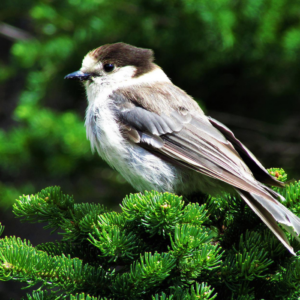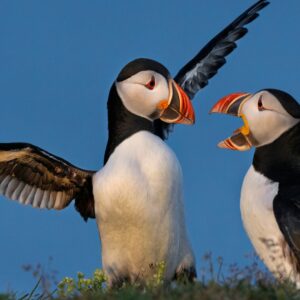Greetings From the Red-necked Grebe, Water Dancer Extraordinaire
Contrary to what their name suggests, Red-necked Grebes aren’t resourceful country folk wielding duct tape and wearing overalls unironically. Still, these birds have a unique charm that’s all their own. Read on to learn about these deep-diving-feather-eating dapper dancers!
Red-necked Grebe Identification
Nonbreeding Red-necked Grebes have dark grey backs, pale bellies, and light coloured cheeks and sides of neck. Breeding adults develop a rust-coloured red breast and neck front, as well as a black cap and well-defined silver cheek. These aquatic birds have long necks and big, knife-like yellow bills. They are larger than most Grebes, but are a little smaller than a Mallard.
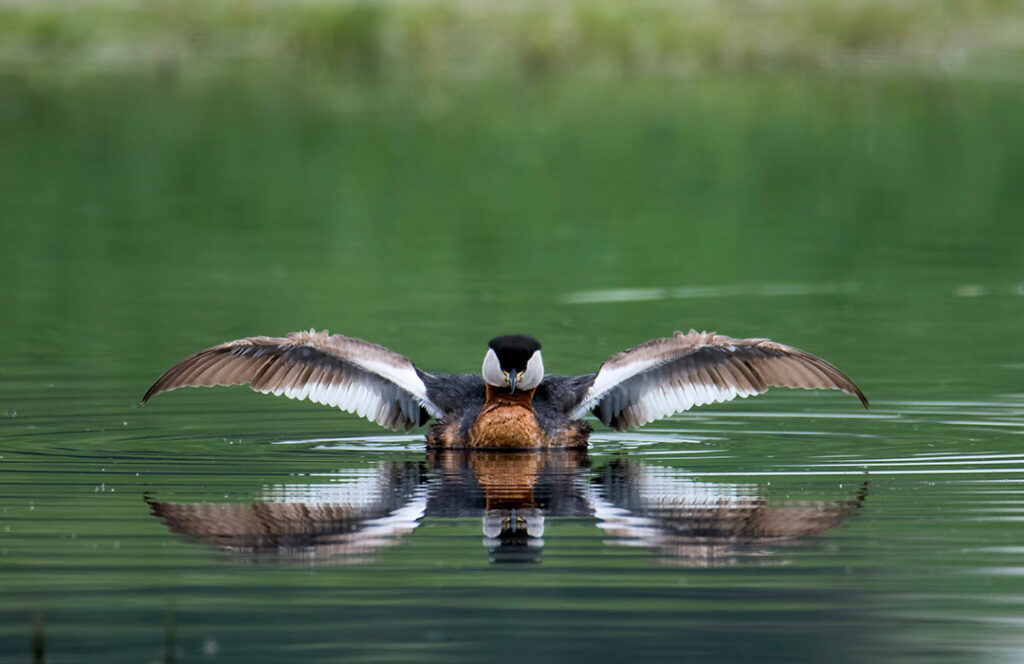
These birds have small legs and wings, making take-offs difficult and making them clumsy in flight and on land. Outside of migration, Red-necked Grebes much prefer swimming to air travel, and if they’re trying to make a quick getaway from a predator, they’re going to dive rather than fly away.
Where do Red-necked Grebes live?
Red-necked Grebes are migratory waterbirds that inhabit lakes, marshes, and coasts in temperate regions of the northern hemisphere, like northern North America, Europe, and Asia. They tend to migrate over land at night and off coastlines during the day. They usually like to live in freshwater lakes and ponds in the summer and saltwater bays and estuaries in the winter, preferring calm and shallow waters over rough waves.
A Day in the Life of a Red-necked Grebe
Red-necked Grebes build nests made of plants that float on shallow marshy water, anchored by the stems of standing plants. They dive underwater looking for fish to eat or they forage for insects, invertebrates, crustaceans and waterside plants on the water’s surface. They can be territorial when it comes to protecting food sources and their young, and aren’t above low blows like attacking transgressors underwater and jabbing them in the stomach with their sharp bills.
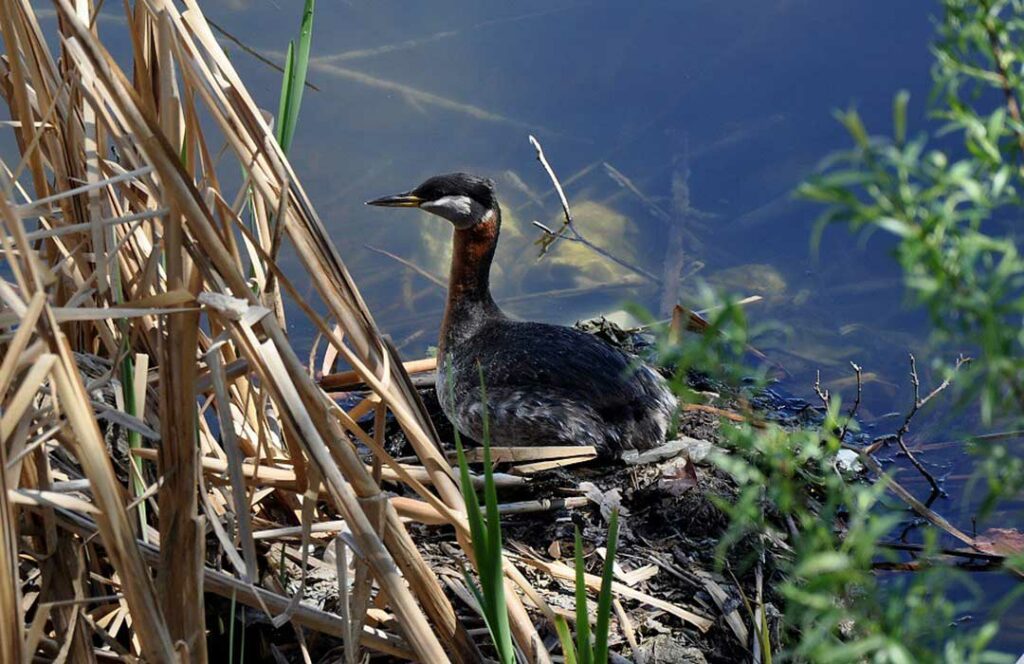
Nothing brings more excitement to the life of a Red-necked Grebe than mating season. Courtship displays of the Red-necked Grebe are loud and intricate, and complex, with a cacophony of squeaks, wails, and even growls! Males raise their handsome crests, and ‘dance’ breast to breast with females, rising up out of the water and turning their heads side to side. Could this tango be why a group of Red-necked Grebes are called a “water dance” of grebes? For especially lucky ladies, males bear gifts of the most succulent, verdant weeds from the bottom of the waterbody.
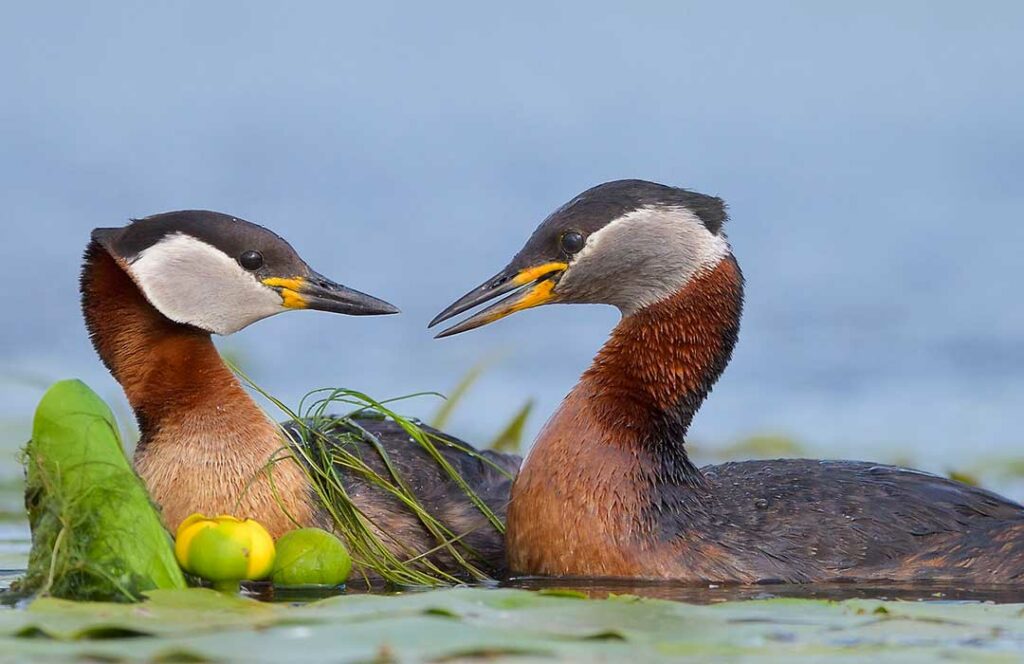
Once nests have been built, dinner has been eaten, adversaries have been chased away, and love has been found, it’s time to relax. Like many birds, Red-necked Grebe like to kick back with some self care by preening their feathers. Sometimes, they swallow their feathers and feed them to their chicks! The exact reason for this is unknown, though the behavior may have the digestive benefit of protecting the lower tract from sharp, hard, or indigestible material like bone.
Are Red-necked Grebes endangered?
Although Red-necked Grebes are considered a species of Least Concern, their population status is not well known, and may be slightly declining due to polluted habitat in their winter coastal areas. Oil spills degrade habitat while commercial fishing nets can entangle the birds in deadly snares.
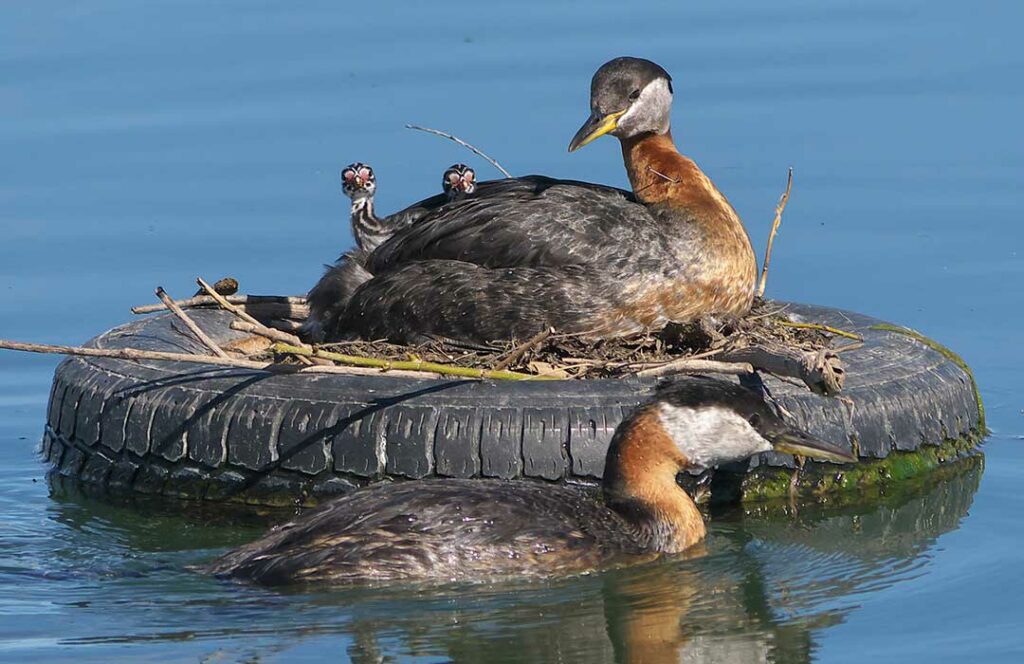
Red-necked Grebes play an important role in their habitats. They help keep the balance of the ecosystems they live in by keeping fish populations in check, while their eggs and chicks provide food for predators like eagles, mink, and pike.
Stay tuned with the latest in Canadian nature by subscribing to our emails. You’ll receive regular updates about what we’re doing to protect species like the Red-necked Grebe, and how you can help.


